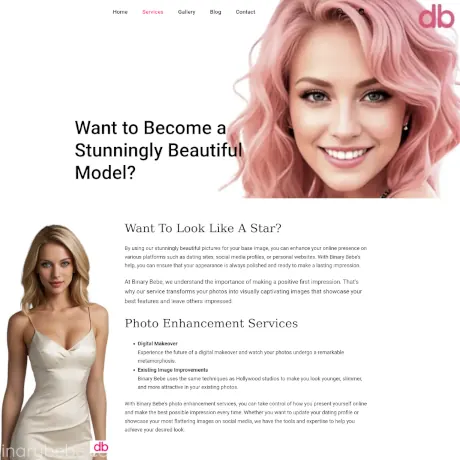Creating a website has become increasingly accessible due to user-friendly platforms and free open source software tools. With just a little bit of knowledge and effort, you can design a functional site that showcases your ideas or services.
However, selling your webdesign skills is an entirely different challenge. While we cannot teach you the ins and outs of marketing yourself successfully as a professional designer, we can guide you in creating a strong online presence for yourself or your startup. Our aim is to simplify the concept and purpose of websites, empowering you to build your own digital space effectively.
While it’s true that creating a visually appealing and well-coded site can demonstrate your technical prowess as a designer, the primary purpose of a website is not to showcase these skills alone. Instead, its main objective should be to provide value and information to your readers or users. With this in mind, let’s dive into the steps you need to take to create an effective and user-focused website:
- Define Your Audience
Understand who your target audience is and what they are looking for on your site. - Plan Your Content Strategy
Determine the types of information you want to share, how often you’ll update it, and which formats (text, images, videos) will best convey your message. - Choose a Platform or CMS
Select an appropriate platform or content management system that suits your needs and skill level. Popular options include WordPress or HTML/CSS-driven websites. - Design for Usability
Prioritize user experience by ensuring your site is easy to navigate, loads quickly, and is mobile-friendly. Use clear headings, descriptive links, and appropriate color schemes. - Optimize for Search Engines (SEO)
Implement SEO best practices such as using relevant keywords, creating meta descriptions, and optimizing images to improve your website’s visibility on search engines like Google. - Test and Refine
Regularly test your site across different devices including mobile phones or tablets and browsers to identify any issues or areas for improvement. - Launch and Maintain
Once you’re satisfied with the design, content, and functionality of your website, launch it and commit to ongoing maintenance, including updates and security measures.

A Website Blueprint
- Register a Domain Name
A domain name is a unique and easy-to-remember web address that identifies a specific website on the internet, allowing users to locate and access it through their browsers.
Prolific Web Design, a web design startup we provide IT services for recommend NameSilo because they have low prices and include domain privacy. - Web Hosting
Web hosting encompasses the practice of leasing server resources to accommodate your website’s data, thereby enabling users worldwide to access its content seamlessly; Hostinger, for instance, is an example of a good, affordable host with fast load speeds and no problems. We really like using them! - WordPress or HTML
After securing your domain name and web hosting, the next step in creating a website would be to choose a platform or content management system (CMS) that best suits your needs. While WordPress and HTML are both popular options, it ultimately depends on your goals, technical skills, and desired level of customization.
WordPress is user-friendly, has a vast library of themes and plugins, but requires maintenance and ongoing security updates. On the other hand, HTML offers greater control over design and code but requires more coding knowledge to set up and manage.
Consider these factors when deciding which platform to use for your website.
WordPress: The Ideal Choice for Budget-Conscious Startups
WordPress is an incredibly popular content management system (CMS) that powers over 40% of all websites on the internet today. Unlike HTML-driven sites, which require manual coding for every component, WordPress offers a vast plugin ecosystem that simplifies the process of adding features like contact forms with just a few clicks. This user-friendly platform boasts a low learning curve, making it an ideal choice for startups operating on tight budgets. Furthermore, YouTube is filled with countless tutorials to guide you through setting up and managing your WordPress website effectively.
Glossary
Here is a list of ten essential WordPress terminologies to familiarize themselves with:
- Theme
A pre-designed template that determines the overall appearance and layout of your website. - Plugins
Additional software components that extend or enhance the functionality of your WordPress site. - Widget
Modular elements that can be dragged and dropped into designated areas (such as sidebars) to customize your site’s design and content. - Dashboard
The administrative interface where you manage and control various aspects of your WordPress website. - Post
Individual pieces of content, such as blog articles or news updates, published on your site. - Page
Static content sections that do not follow the traditional blog format, like “About Us” or “Contact.” - Category
A way to organize and categorize posts based on their topics or themes. - Tag
Keywords assigned to individual posts to further refine their classification within your site’s content structure. - Media Library
A repository for storing images, videos, audio files, and other multimedia elements used throughout your website. - Permalinks
The permanent URL of a specific post or page on your WordPress site. These links are designed to be search engine-friendly and easy to share.
By understanding these terms, you’ll have a bit of a head-start with learning WordPress and creating effective websites that meet your needs and eventually, those of your clients.
Putting Your Knowledge into Practice

As you dive into web design and WordPress, use the examples and sample sites we’ve provided with their respective URLs as a foundation for your learning experience. Analyze these websites closely to understand how different elements are used effectively in design and functionality. Don’t hesitate to experiment with writing and modifying the pythonsim.com HTML code – it’s an integral part of the process.
If you have any questions, feel free to leave a comment below. This information is just the starting point; we will continue to publish more detailed tutorials tailored specifically for new web designers and WordPress users. Happy learning!